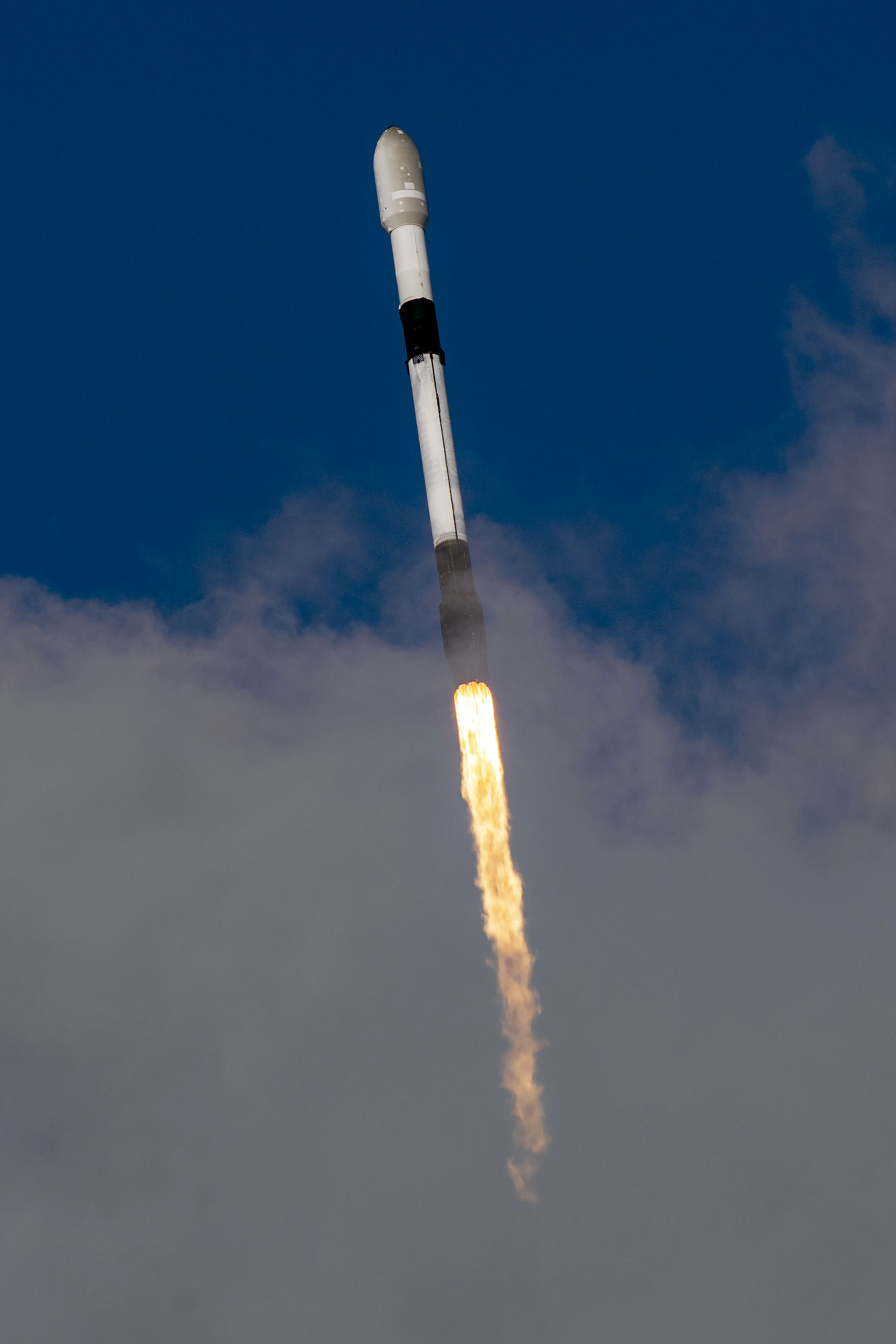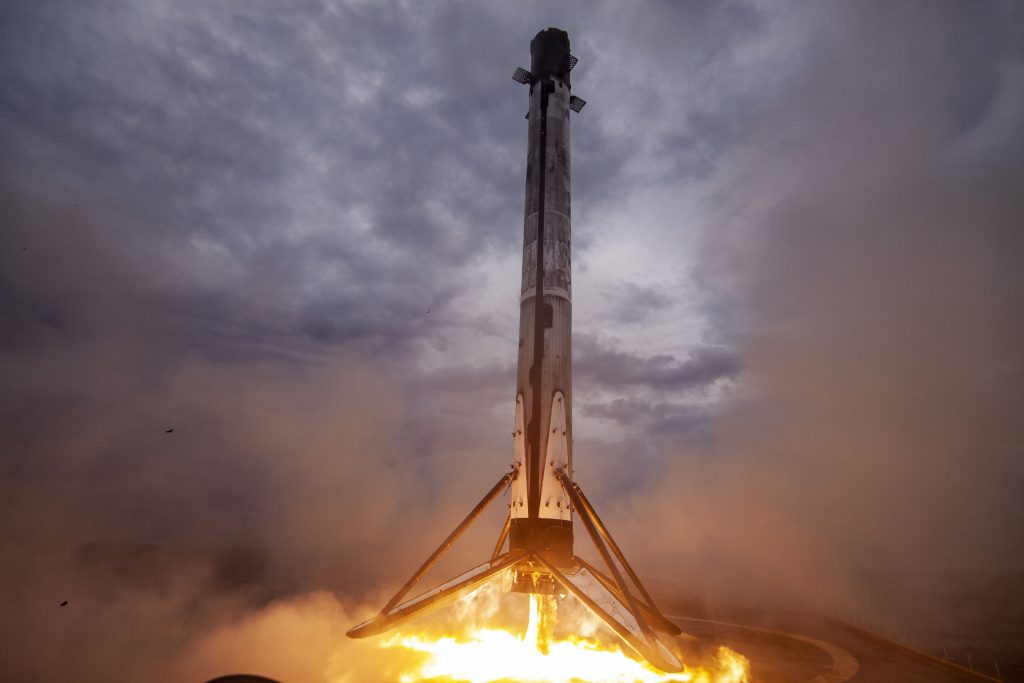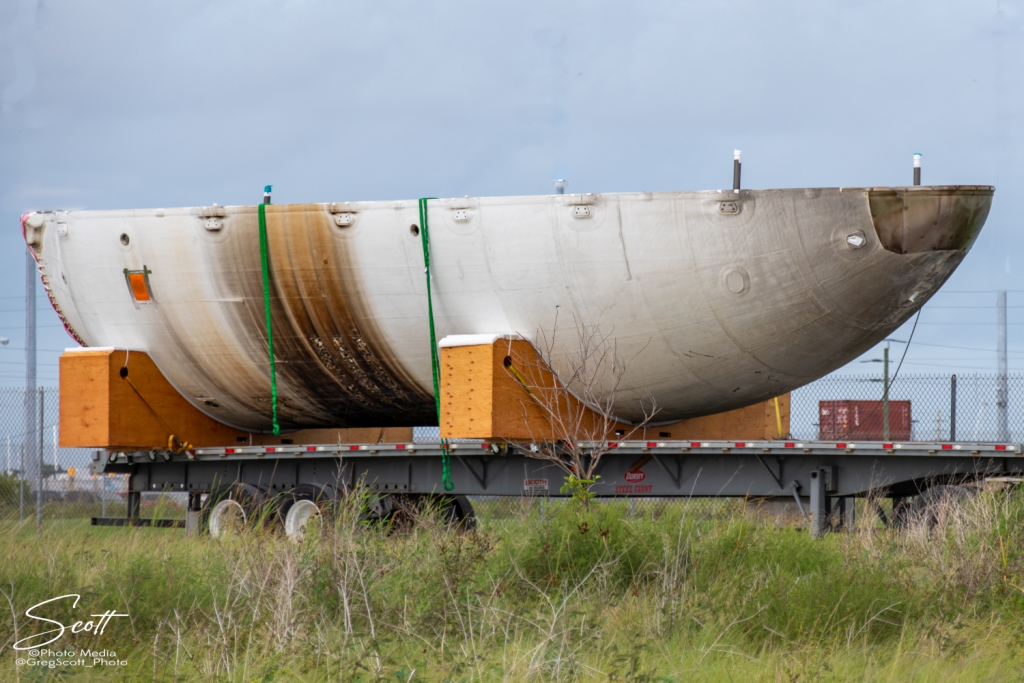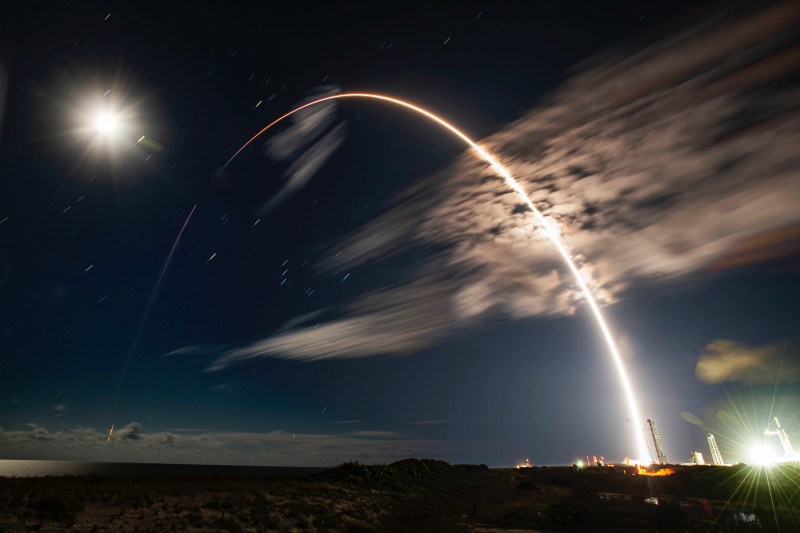Featured Image: SpaceX
Lift Off Time | November 03, 2022 – 05:22 UTC | 01:22 EDT |
|---|---|
Mission Name | Hotbird 13G |
Launch Provider | SpaceX |
Customer | Airbus Defense and Space, Eutelsat |
Rocket | Falcon 9 Block 5 Booster B1067-7 |
Launch Location | Space Launch Complex 40 (SLC-40), Cape Canaveral Space Force Station, Florida, USA |
Payload mass | 4,500 kg (9,900 lb) |
Where is the satellite going? | Geostationary transfer orbit |
Will they be attempting to recover the first stage? | Yes |
Where will the first stage land? | Autonomous Spaceport Droneship (ASDS) Just Read The Instructions |
Will they be attempting to recover the fairings? | Yes |
Are these fairings new? | No |
How’s the weather looking? | The weather is currently 90% GO for launch (as of November 01, 2022 at 13:30 UTC) |
This will be the: | – 185th Falcon 9 mission – 152nd booster landing – 78th consecutive landing – 51st launch for SpaceX in 2022 (a record) – 194th SpaceX mission – 100th SpaceX launch from SLC-40 – 151st orbital launch attempt of 2022 |
Where to watch | Official livestream |
What’s All This Mean?
SpaceX will be launching the Hotbird 13G satellite on their 51st mission of the year. The 4,500 kg (9,900 lb) satellite will launch atop a Falcon 9 rocket from Space Launch Complex 40 (SLC-40), Cape Canaveral Space Force Station in Florida, USA. Hotbird 13G was built by Airbus Defense and Space for joint operation by the European Space Agency and Eutelsat.
What Is The Eutelsat Hotbird 13G satellite?
In short, the Eutelsat Hotbird 13G satellite is a telecommunications satellite. Hotbird 13G is one of two identical satellites developed to replace three older communications satellites. The other satellite holds the title of Hotbird 13F and was launched by a Falcon 9 Block 5 in mid-October 2022. The pair will provide services to Europe, Northern Africa, and the Middle East.

The satellite has an estimated lifetime of 15 years and will be replacing the Hotbird 8, 9, 10 (later renamed to Hotbird 13 B, C, and D respectively) which lasted about 14 years. The increased Ku band capacity on the newly update Hotbird 13F and 13G satellites now only requires two satellites to be at Eutelsat’s East position in geostationary orbit instead of the prior three.
Two solar panels generate 22 kW of power to enable efficient use of 80 Ku band transponders. That totals 160 Ku band transponders between both satellites in the same position.
What Is Falcon 9 Block 5?
The Falcon 9 Block 5 is SpaceX’s partially reusable two-stage medium-lift launch vehicle. The vehicle consists of a reusable first stage, an expendable second stage, and, when in payload configuration, a pair of reusable fairing halves.
First Stage
The Falcon 9 first stage contains 9 Merlin 1D+ sea level engines. Each engine uses an open gas generator cycle and runs on RP-1 and liquid oxygen (LOx). Each engine produces 845 kN of thrust at sea level, with a specific impulse (ISP) of 285 seconds, and 934 kN in a vacuum with an ISP of 313 seconds. Due to the powerful nature of the engine, and the large amount of them, the Falcon 9 first stage is able to lose an engine right off the pad, or up to two later in flight, and be able to successfully place the payload into orbit.
The Merlin engines are ignited by triethylaluminum and triethylborane (TEA-TEB), which instantaneously burst into flames when mixed in the presence of oxygen. During static fire and launch the TEA-TEB is provided by the ground service equipment. However, as the Falcon 9 first stage is able to propulsively land, three of the Merlin engines (E1, E5, and E9) contain TEA-TEB canisters to relight for the boost back, reentry, and landing burns.
Second Stage
The Falcon 9 second stage is the only expendable part of the Falcon 9. It contains a singular MVacD engine that produces 992 kN of thrust and an ISP of 348 seconds. The second stage is capable of doing several burns, allowing the Falcon 9 to put payloads in several different orbits.
For missions with many burns and/or long coasts between burns, the second stage is able to be equipped with a mission extension package. When the second stage has this package it has a grey strip, which helps keep the RP-1 warm, an increased number of composite-overwrapped pressure vessels (COPVs) for pressurization control, and additional TEA-TEB.

Falcon 9 Booster
There booster assigned to the Hotbird 13G mission is B1067. B1067 has flow six previous missions, making this it’s seventh flight, changing it’s designation to B1067-7.
| B1067’s missions | Launch Date (UTC) | Turnaround Time (Days) |
|---|---|---|
| Dragon CRS-2 SpX-22 | June 03, 2021 17:29 | N/A |
| Crew-3 | November 11, 2021 02:03 | 160.36 |
| Türksat 5B | December 19, 2021 03:58 | 38.08 |
| Crew-4 | April 27, 2022 07:52 | 129.16 |
| Dragon CRS-2 SpX-25 | July 15, 2022 00:44 | 78.70 |
| Starlink Group 4-34 | September 19, 2022 00:18 | 65.98 |
| Hotbird 13G | November 03, 2022 03:26 | 45.13 |
Following stage separation, the Falcon 9 will conduct two burns. These burns aim to softly touch down the booster on SpaceX’s autonomous spaceport drone ship Just Read The Instructions.

Falcon 9 Fairings
The Falcon 9’s fairing consists of two dissimilar reusable halves. The first half (the half that faces away from the transport erector) is called the active half, and houses the pneumatics for the separation system. The other fairing half is called the passive half. As the name implies, this half plays a purely passive role in the fairing separation process, as it relies on the pneumatics from the active half.
Both fairing halves are equipped with cold gas thrusters and a parafoil which are used to softly touch down the fairing half in the ocean. SpaceX used to attempt to catch the fairing halves, however, at the end of 2020 this program was canceled due to safety risks and a low success rate. On Galaxy 33 & 34, SpaceX will attempt to recover the fairing halves from the water with their recovery vessel Bob.
In 2021, SpaceX started flying a new version of the Falcon 9 fairing. The new “upgraded” version has vents only at the top of each fairing half, by the gap between the halves, whereas the old version had vents placed spread equidistantly around the base of the fairing. Moving the vents decreases the chance of water getting into the fairing, making the chance of a successful scoop significantly higher.

Hotbird 13G Countdown
All times approximate
| HR/MIN/SEC | EVENT |
|---|---|
| 00:38:00 | SpaceX Launch Director verifies go for propellant load |
| 00:35:00 | RP-1 (rocket grade kerosene) loading begins |
| 00:35:00 | 1st stage LOX (liquid oxygen) loading begins |
| 00:16:00 | 2nd stage LOX loading begins |
| 00:07:00 | Falcon 9 begins engine chill prior to launch |
| 00:01:00 | Command flight computer to begin final prelaunch checks |
| 00:01:00 | Propellant tank pressurization to flight pressure begins |
| 00:00:45 | SpaceX Launch Director verifies go for launch |
| 00:00:03 | Engine controller commands engine ignition sequence to start |
| 00:00:00 | Falcon 9 liftoff |
LAUNCH, LANDING, AND DEPLOYMENT
All times are approximate
| HR/MIN/SEC | EVENT |
|---|---|
| 00:01:12 | Max Q (moment of peak mechanical stress on the rocket) |
| 00:02:32 | 1st stage main engine cutoff (MECO) |
| 00:02:35 | 1st and 2nd stages separate |
| 00:02:42 | 2nd stage engine starts (SES-1) |
| 00:03:22 | Fairing deployment |
| 00:06:29 | 1st stage entry burn begins |
| 00:06:57 | 1st stage entry burn completes |
| 00:08:07 | 2nd stage engine cutoff (SECO) |
| 00:08:22 | 1st stage landing burn begins |
| 00:08:45 | 1st stage landing |
| 00:29:12 | 2nd stage engine restarts (SES-2) |
| 00:30:10 | 2nd stage engine cutoff (SECO-2) |
| 00:36:11 | Eutelsat HOTBIRD 13G deploys |





The fairing halves aren’t new on this flight, I think you made an error. Please fix!